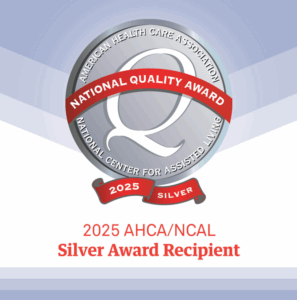The health benefits of engaging in regular exercise and maintaining an active lifestyle are numerous. They range from lower blood pressure to decreased rates of diabetes. Sometimes, however, older adults worry that physical activity will increase their risk for experiencing a fall. It can cause them to limit or give up an active lifestyle, believing it will keep them safer. In fact, the opposite is true.
The National Institutes of Health (NIH) says “taking it easy” can actually put seniors at risk for a health problem. It’s linked to more hospital stays, a greater number of physician appointments and increased reliance on medications.
Here’s what older adults should know to stay healthy as you grow older.
What Is the Difference Between Activity and Exercise?
A question that often comes up during discussions about a healthy lifestyle is the difference between exercise and activity. It’s a great topic to learn more about.
- Exercise: When a doctor suggests you get more exercise, they are referring to more formal, structured types of physical fitness. Senior-friendly suggestions might include walking, biking, swimming, chair yoga and Pilates.
- Activity: By contrast, staying active includes the ways you naturally stay moving and engage with life. Examples include gardening and yard work, performing household chores or even grocery shopping.
Both exercise and activity are important for maintaining a healthy lifestyle.
What to Know About Activity in Later Life
If you or a senior loved one is trying to learn more about activity, exercise and aging, this information will be useful:
- Inactivity can lead to isolation: There’s plenty of research to show that a sedentary lifestyle can increase a senior’s risk for injury, illness and disease. It can also result in isolation and its associated dangers. Specifically, isolation leads to greater incidences of issues ranging from depression to heart disease. People who are inactive and isolated have higher rates of hospitalization, visit the doctor more frequently and take greater numbers of prescription medicines.
- Exercise helps with fall prevention: While it might seem counterintuitive, seniors who engage in regular exercise experience fewer falls. This is because fitness activities help with balance, strength and flexibility. Each of these is a necessary part of fall prevention. Since one in four seniors experience a serious fall each year, it’s easy to see why physical activity should be a priority.
- Staying active is good for mental health: Exercise and activity boost mood at any age while also helping to combat chronic stress. These are often-overlooked health conditions that impact a senior’s quality of life. Many people don’t realize that chronic stress is linked to higher rates of inflammation in the body, which, in turn, is tied to obesity, Alzheimer’s disease, cardiac problems and more.
- Regular exercise promotes strong bones and muscles: According to the American Academy of Orthopaedic Surgeons, exercise is good not just for pumping up your muscles, but also for building strong bones. The opposite is also true. Inactivity leads to bone loss, which puts people at higher risk for fractures.
- Active living helps with quality sleep: Insomnia and other sleep problems are more common with age. One way to manage that is with regular exercise. Older adults who lead more active lives sleep better. Exercising for 150 minutes each week can improve your quality of sleep by as much as 65%. It’s a good way to try to avoid prescription sleep aids.
About American Senior Communities
At American Senior Communities in Indiana, we offer a wide range of lifestyle and care solutions for older adults that incorporates activities and exercise into each day. To learn more about our lifestyle care options visit ASCCare.com.




